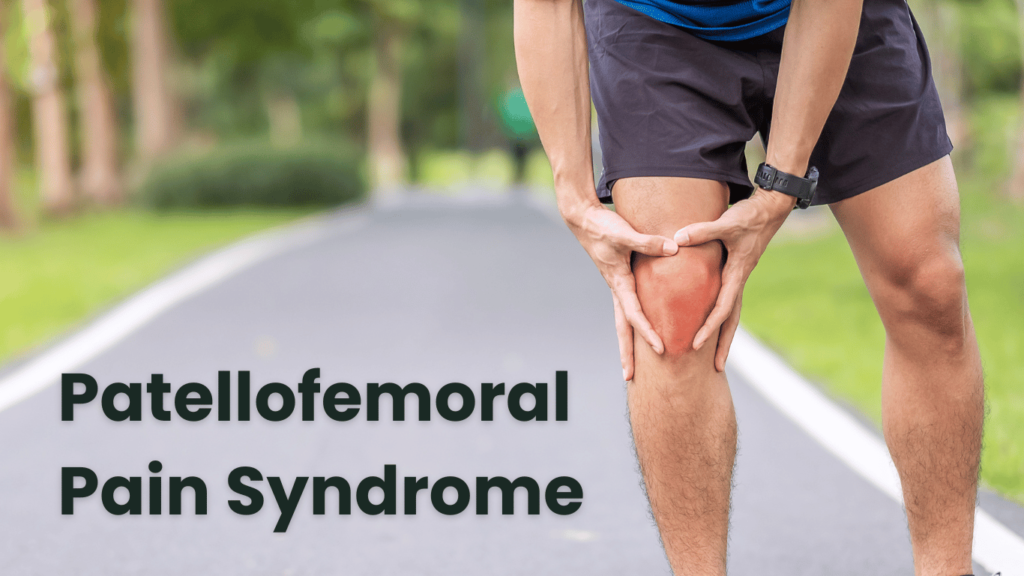Introduction
Patellofemoral Pain Syndrome (PFPS) is a common orthopedic condition characterized by pain around the kneecap, often aggravated by activities such as running, climbing stairs, or prolonged sitting. In this blog post, we will delve into the causes, symptoms, and treatment options for PFPS, with insights from Dr. Abhishek Chaturvedi, a renowned Orthopedic Surgeon specializing in sports injuries, serving patients in Mira Road and Malad.

What is Patellofemoral Pain Syndrome?
Patellofemoral Pain Syndrome occurs when the patella (kneecap) rubs against the femur (thigh bone), causing irritation and inflammation of the surrounding tissues. This condition is commonly seen in athletes, runners, and individuals with poor knee alignment or muscle imbalances.

Causes of PFPS
- Overuse: Repetitive activities such as running, jumping, or squatting can strain the patellofemoral joint, leading to PFPS.
- Muscle Weakness: Weakness or imbalance in the quadriceps, hamstrings, or hip muscles can alter knee mechanics, contributing to PFPS.
- Malalignment: Issues with knee alignment, such as knock knees or flat feet, can increase stress on the patellofemoral joint, leading to pain and discomfort.
- Trauma: Direct trauma or injury to the knee can result in PFPS, especially in athletes involved in contact sports.
Symptoms of Patellofemoral Pain Syndrome
- Anterior knee pain, especially with activities like climbing stairs, kneeling, or sitting for extended periods.
- Swelling or tenderness around the kneecap.
- Pain worsens with prolonged activity and improves with rest.
- Audible or palpable grinding or clicking sensation in the knee joint.
- Difficulty performing activities that require bending or weight-bearing on the affected knee.
Diagnosis and Treatment
Diagnosing PFPS typically involves a thorough physical examination, including assessing knee alignment, muscle strength, and range of motion. Imaging tests such as X-rays or MRI scans may be ordered to rule out other underlying conditions.
Treatment for PFPS often involves a combination of conservative measures and lifestyle modifications, including:
- Rest and Activity Modification: Avoiding activities that exacerbate symptoms and incorporating low-impact exercises to strengthen the muscles around the knee.
- Physical Therapy: Targeted exercises to improve muscle strength, flexibility, and alignment, under the guidance of a qualified physical therapist.
- Orthotics: Custom orthotic devices or shoe inserts may help correct foot alignment and reduce stress on the patellofemoral joint.
- Pain Management: Over-the-counter pain relievers, icing, or topical treatments to alleviate pain and inflammation.
- Surgical Intervention: In severe cases of PFPS unresponsive to conservative treatments, surgical options such as arthroscopic knee surgery may be considered to realign the patella or repair damaged tissues.
Preventive Tips for Avoiding Patellofemoral Pain Syndrome
- Strengthening exercises: Focus on strengthening the muscles around the knee, especially the quadriceps and hamstrings, to provide better support and stability.
- Proper footwear: Wear supportive and well-fitted shoes, especially during physical activities, to reduce stress on the knees.
- Avoid overuse: Avoid activities that put excessive stress on the knees, such as repetitive jumping or running on hard surfaces.
- Warm-up and cool-down: Always warm up before exercising and cool down afterward to prepare the muscles and prevent injury.
- Proper form: Use proper techniques and form during exercises and activities to avoid unnecessary strain on the knees.
- Cross-training: Incorporate a variety of low-impact activities into your routine, such as swimming or cycling, to reduce the risk of overuse injuries.
- Listen to your body: Pay attention to any signs of discomfort or pain in the knees and take appropriate rest or modifications in your activities.
Conclusion
Patellofemoral Pain Syndrome can significantly impact an individual’s quality of life, but with early diagnosis and appropriate treatment, most patients can experience significant improvement in symptoms. If you’re experiencing persistent knee pain or discomfort, don’t hesitate to consult Dr. Abhishek Chaturvedi, a trusted Orthopedic Surgeon in Mira Road and Malad, for personalized care and effective treatment options tailored to your needs.
